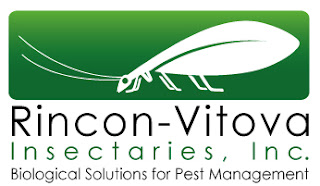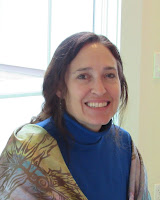by Jenna Messier
 |
| Jack Kittredge, Julie Rawson, Allison Houghton - NOFA MASS |
Back in the summer of 2016, Julie Rawson and Jack Kittredge from NOFA MASS spoke with ML Altobelli from Ecological Landscape Alliance and determined that there was great interest in carbon in the soil and a potential for collaboration on a conference. I was happy to get on board as well, as folks at CT NOFA and NOFA OLC were all excited about the
Soil Carbon Restoration white paper written by Jack Kittredge and we wanted to know more. Folks from Biodiversity for a Livable Climate were asked to participate, and so our conference committee began. Coordinating Committee members included Penny Lewis from Ecological Landscape Alliance, Adam Sacks from Biodiversity for a Livable Climate, Allison Houghton from NOFA MASS and myself.
Fast forward to January 31st, and the room was packed for Landscape Heroes: Carbon, Water and Biodiversity at UMASS in Amherst!
We started out the day with our
Keynote Speaker: Courtney White from New Mexico. Courtney first wrote
about carbon farming in his book,
Grass, Soil, Hope, where he reported that ranchers out West were creating soil fertility, actively managing their water resources, and implementing healthy grazing practices: and all of these practices were resulting in more carbon being stored into the soil. Courtney also shared five strategies for reducing and sequestering carbon from the atmosphere into the soil:
 |
| Courtney White |
- Enriching soil carbon
- Farming with perennials
- Climate-friendly livestock production
- Protecting natural areas
- Restoring degraded watersheds and rangelands
 |
| T. Fleisher |
For the next presentation, we had T. Fleisher, co-owner of F2 Environmental Design, talking about compaction as a huge problem to be overcome in order to increase soil health, nutrient cycling and soil's carbon sequestration potential. T. has worked at large public properties which are heavily used, and thus suffer from compaction. He uses soil biology to help reduce compaction on his properties, letting the microbes do the work. See the full report on T's work at Harvard and the Harvard Yard Soil Restoration Project
HERE. T is able to transition heavily used properties to organic management because he starts with soil testing, he uses test control plots for comparison and he measures the changes which occur after the applications are made.
Bryan O'Hara, organic vegetable farmer from Lebanon, CT, talked about the process of transitioning
 |
| Bryan O'Hara |
his farm to a no-till system of production. Tilling soil allows carbon to be released into the atmosphere, as one by product of the tilling process. Using a no-till system means you need to come up with a non-chemical way of knocking down your previous crop and incorporating that organic material into your soil all without using mechanical turning of the soil. Bryan slowly started a no-till approach one crop at a time, one field at a time, but he has really seen it pay off over the years. The last few years of drought have actually been the most productive and lucrative on Tobacco Road Farm, as the improved soil held soil moisture very well.
Bryan also talked about Korean Natural Farming techniques which he first heard about from interns working on his farm. It uses particular composting processes which utilize local biology, and increase soil fertility on the farm.
Jim Laurie from Biodiversity for a Livable Climate ended the morning session with an overview about the amount of carbon in the atmosphere, around 360 ppm at this time, and how we may hit 500ppm by the end of the century - which would cause significant ice-melting and ocean rise. He also showed a diagram demonstrating how little fresh water there is on the planet, from
Howard Perlman at USGS.
The afternoon session was called "Humans as Agents for Positive Change." We started with Paul Wagner from Soil FoodWeb NY and Greener Pastures Organics, who provided an overview of how soil biology symbiotically works with plants to break down minerals and make nutrients available to the plants at the root level. As a result of this process, carbon is drawn down from the air, travels through the plants and then can be stored in humus around the root zone. When humans choose to reproduce soil microbiology in compost or compost tea, and then apply it to the soil, this increases nutrient cycling and can restore healthy soil function.
 |
| Paul Wagner and Jenna Messier |
Bruce Fulford, Owner of City Soil and Greenhouse which produces and distributes locally produced compost, mulch and amended soils in Boston. By making compost and removing food wastes from the landfills, it reduces methane released into the atmosphere when food is decomposing and not properly composted. In addition, by producing high quality composts and distributing them locally, this increases the ability to grow healthy plants in a community and reduces trucking and shipping of heavy bags or trucks of composts from far away places. Bruce sees this work as community improvement, from local foods to jobs being produced.
 |
| Bruce Fulford |

Hugh McLaughlin, Chief Technology Officer from NextChar, presented information on biochar such as its properties and unique place in soil health. Biochar is fascinating! Hugh shared that biochar has lots of microscopic pore space, where water and soil microbes can hide or be stored. Biochar endures in the soil for many years, contains carbon, increases cation exchange capacity, and increases adsorption capacity. Biochar can be produced in many ways, and is an up and coming part of any soil health program.
 |
| Chip Osborne |
Last but not least, Chip Osborne from Osborne Organics finished up the presentations by talking about growing healthy, organic turf and how this can also contribute to carbon being stored in the soil. If you choose to use a diversity of turf species, by selecting perennial rye grasses, fescues and kentucky blue grass, then the turf can be more healthy and resilient under stress conditions. If you improve the soil and aerate compacted areas, you can increase root growth which improves plant health and allows photosynthesis and carbon draw down to occur in turf and lawns, too. By keeping your grass over 3 inches in length, the longer the blades, the better those plants will photosynthesize and function, as well. "Grass will not disappear, but you can manage your turf organically and sustainably and it can be part of a healthy ecosystem" was the message from Chip.
The conference was a general overview of what people from various industries currently know about carbon soil sequestration, demonstrated what is working well in different areas of the country, and showed us all that much more research needs to be done to identify solid ways of measuring carbon storage in the soil with different approaches. It was a collegial atmosphere, people had great questions for the panelists, vendors offered products and information of interest to the group, and we all had to run out the door a little too soon as the snowstorm began. I realize that we were not able to answer all of the questions: but we started the conversation.... What are you doing to sequester carbon in the soil????

Thanks to our sponsor, Rincon- Vitova Insectaries, Inc. for providing support to our conference!
Thanks to all of the following vendors!
| VisionWorks |
| The Conway
School |
| Green Earth
Ag & Turf |
| The Perfect
Earth Project |
| Pearl's
Premium |
| SODCO |
| Compostwerks |
| Dvinci Energy |















